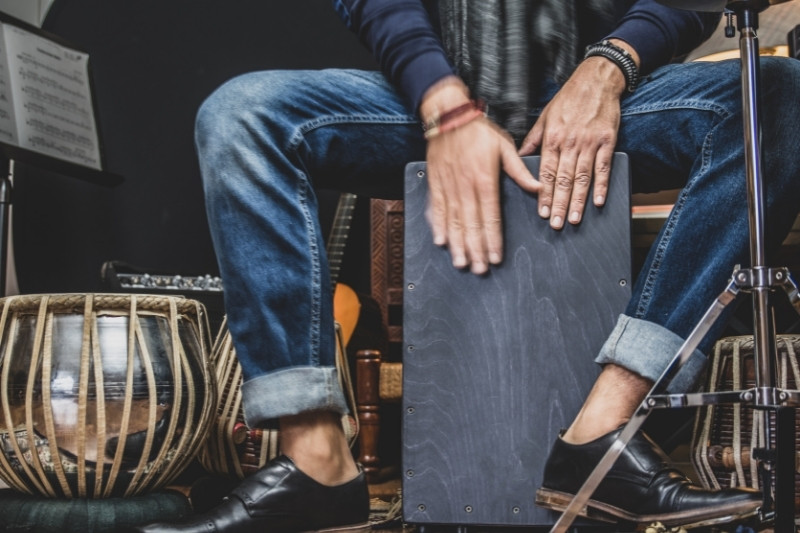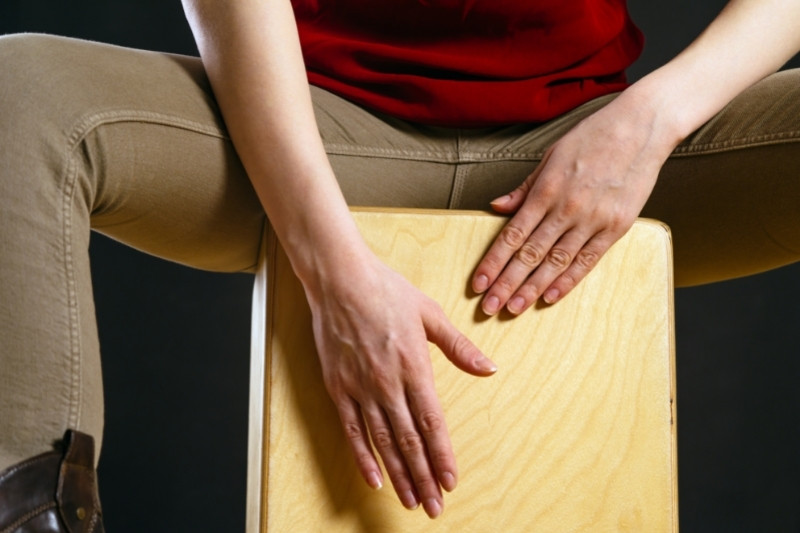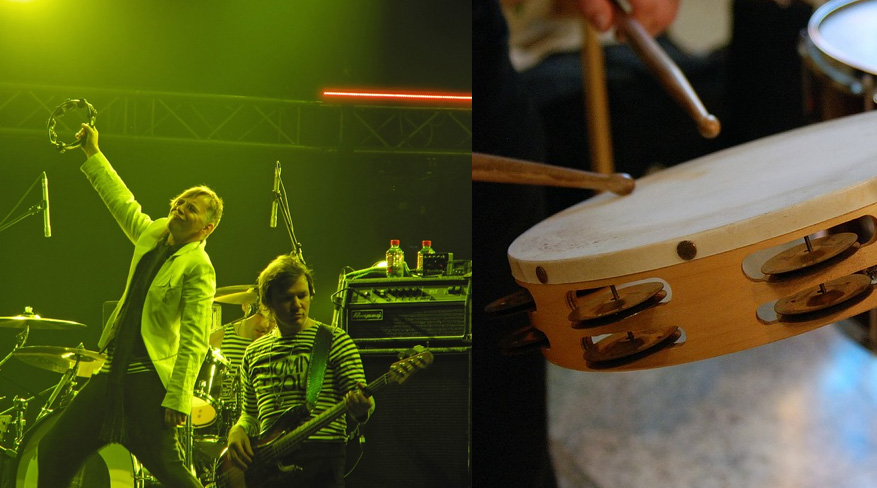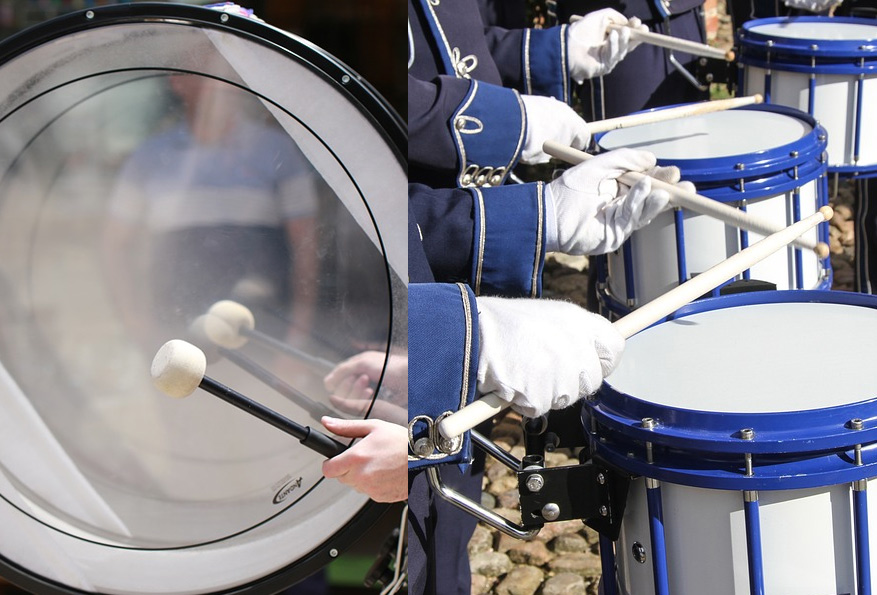The 7 Best Instruments for Drum Circles
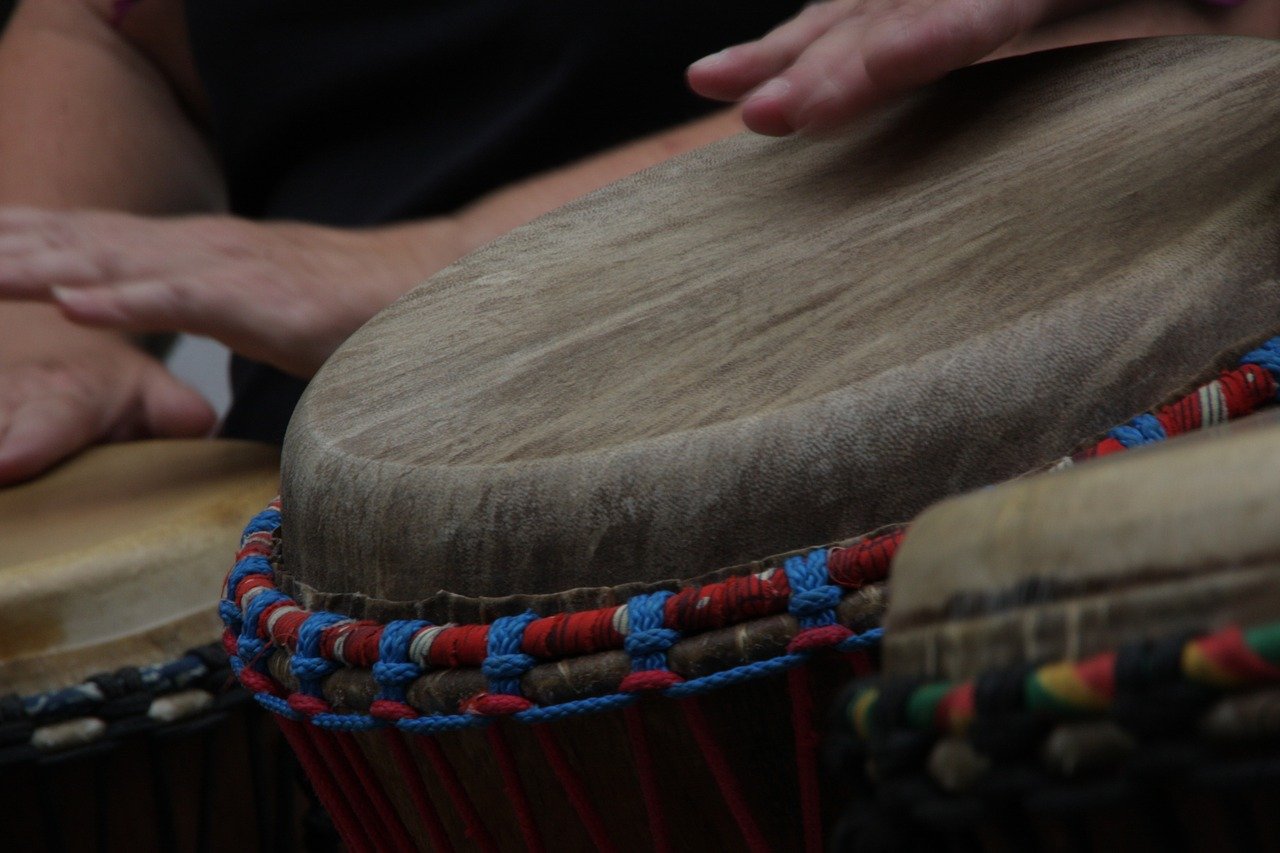
A drum circle is a group of people playing drums and percussion instruments together in a casual and collaborative setting. The Djembe is the most common instrument used in a drum circle, along with bongos, congas, toms, snares, and other percussion instruments.
Percussion is believed to be the oldest family of musical instruments, so it’s no surprise that drum circles became ingrained in many cultures.
Contents
A drum circle is a group of people playing drums and percussion instruments. Of course, that’s just the basic definition, as drum circles are so much more than that.
In drum circles, people can get together, socialize, and drum together to give off some positive vibrations and feel the transformative energy that music gives off.
1. Djembe
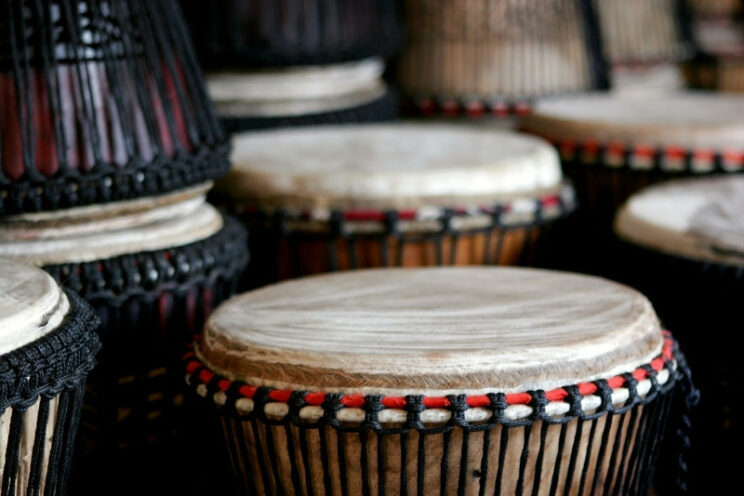
The Djembe is a hand drum, originally from West Africa, and is the most common instrument you see in drum circles. A Djembe is made from a single piece of wood and has a skin stretched over the top. It’s played with bare hands and produces a range of sounds by striking the skin with different parts of the hand.
The Djembe has a rich history and was originally used for communication, ceremonies, and celebrations. In recent years, it has become popular all over the world as a way to bring people together in drum circles.
Today, they are considered one of the most versatile instruments, as they can be played solo or in a group. They are also relatively easy to learn, which makes them perfect for beginners.
2. Bongos
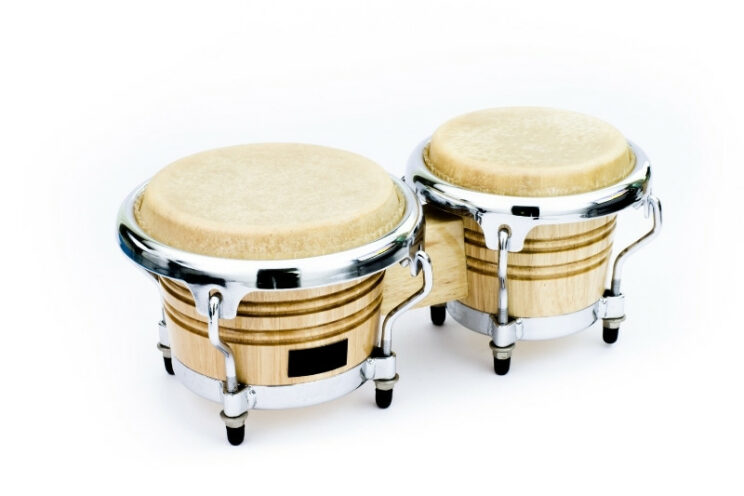
The Bongo drum is another hand drum, originating from Cuba. Bongo drums are made from small barrels, usually attached together. Their material and size create a distinct sound that is often used in Latin American music.
Bongos are usually played in pairs, with one drum being slightly higher in pitch than the other. They are played with hands and produce a range of sounds, depending on how they are hit.
Bongos have a long history dating back to the 16th century. In recent years, they have become popular all over the world and are often played in drum circles.
3. Congas
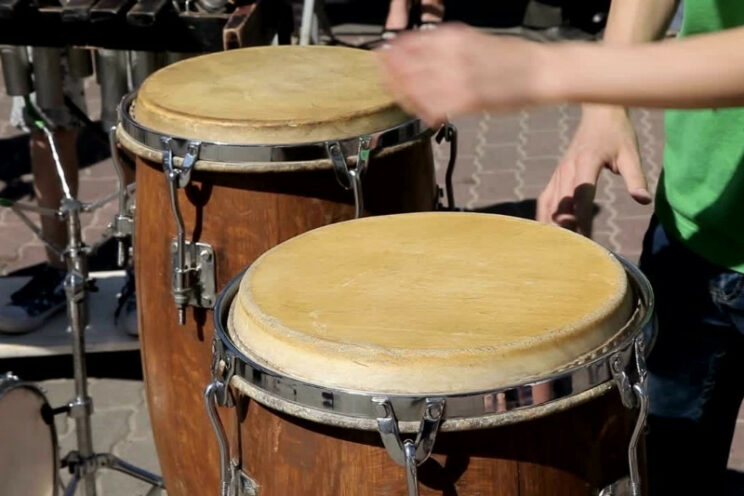
Congas are also used in drum circles. They are hand drums originating from Cuba, similar to the bongos. Congas are made from a single piece of wood and have skin stretched over the top, usually calfskin. Today, they are made from wood or fiberglass, and they frequently have synthetic heads.
They come in different sizes and are usually played in pairs and produce a range of sounds depending on how they are struck. Drum circles can sometimes have two or three different sizes of congas to create a fuller sound.
The Congas have a rich history and have become popular all over the world in recent years. Back in the day, they were used as single drums played by one person. Now, one drummer can be seen playing two or three at a time, creating different sounds with a variety of tones.
4. Cajon
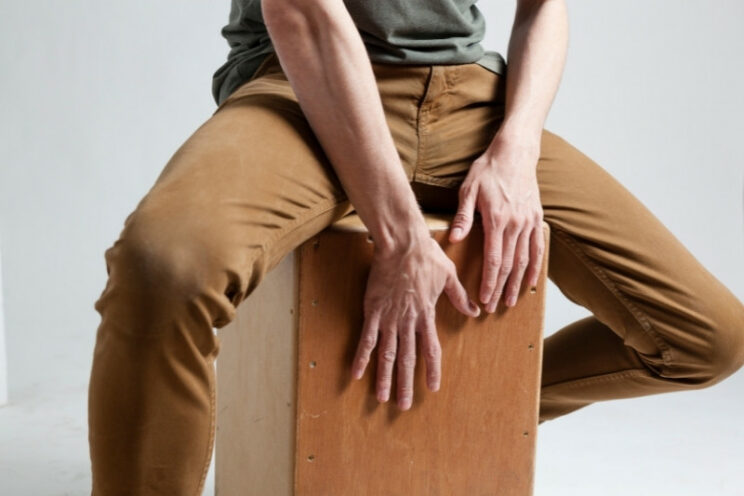
The Cajon drum is a percussion instrument that originated from Peru. It is a box-shaped drum that is usually made from wood. The Cajon history dates back to the early 19th century.
The Cajon is played by sitting on the drum and striking the front panel with your hands. The Cajon produces a range of sounds, depending on how it is struck and what kind of material is used on the front panel. They are usually accompanying instruments that serve the purpose of keeping the beat.
They have found their way in drum circles all over the world and are a popular choice for many percussionists. Cajon Drums are relatively easy to learn and are great for beginners. Nowadays, players often use drum pedals for the Cajon. You also have the electronic Cajon.
5. Snare Drum
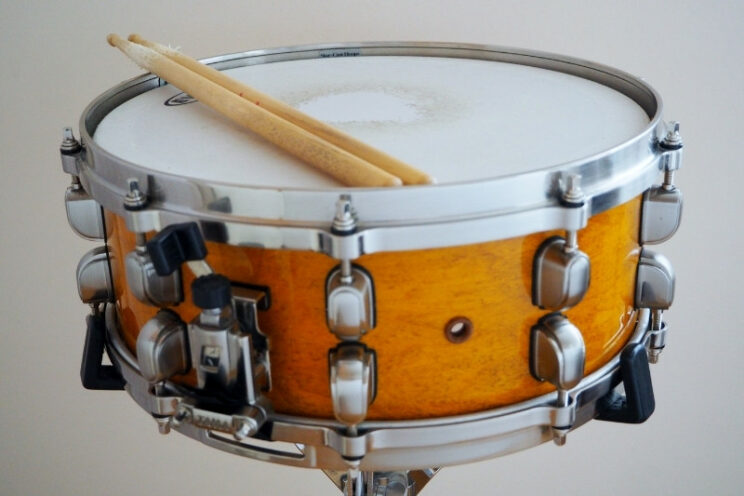
While these are more traditional percussion instruments, you can also find more modern drums that are played with sticks or mallets. The Snare Drum, for example, is a popular choice in drum circles. It is a handheld drum that has metal wires or snares stretched across the bottom drum head.
The snare drum is played with drumsticks, and the snares rattle when the sticks hit the head, which creates a unique sound. The sound of the snare drum can be changed by adjusting the tension of the snares.
Snares are typically a part of a drum kit and are used all over the world by bands and artists for making music. In drum circles, they are a popular choice for many people.
6. Marimba
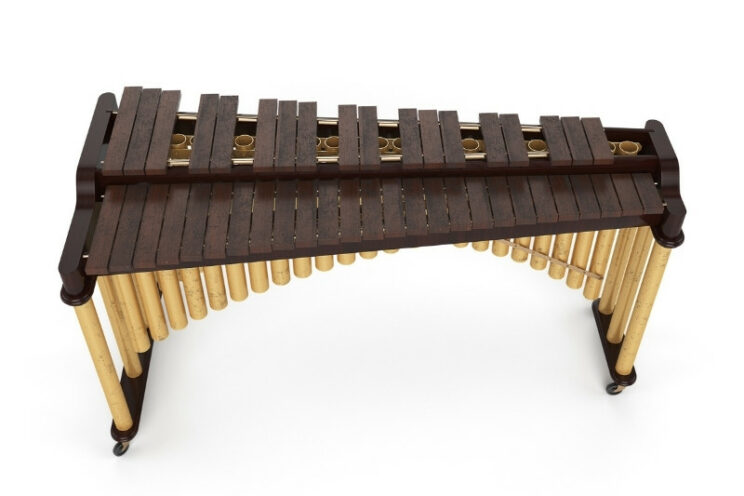
The Marimba is another percussion instrument that is played with mallets. It is a wooden xylophone that originated in Africa. The Marimba has become a popular choice in many music genres, including jazz and blues.
The Marimba is played by striking the wooden bars with mallets. It produces a range of sounds, depending on the size and material of the bars. They are usually made from wood, but you can also find metal or plastic ones.
They are also a common instrument that you may encounter in a drum circle, with great sounds that everyone can enjoy. The arrangement of the bars on a Marimba can be different, depending on the model.
7. Frame Drums
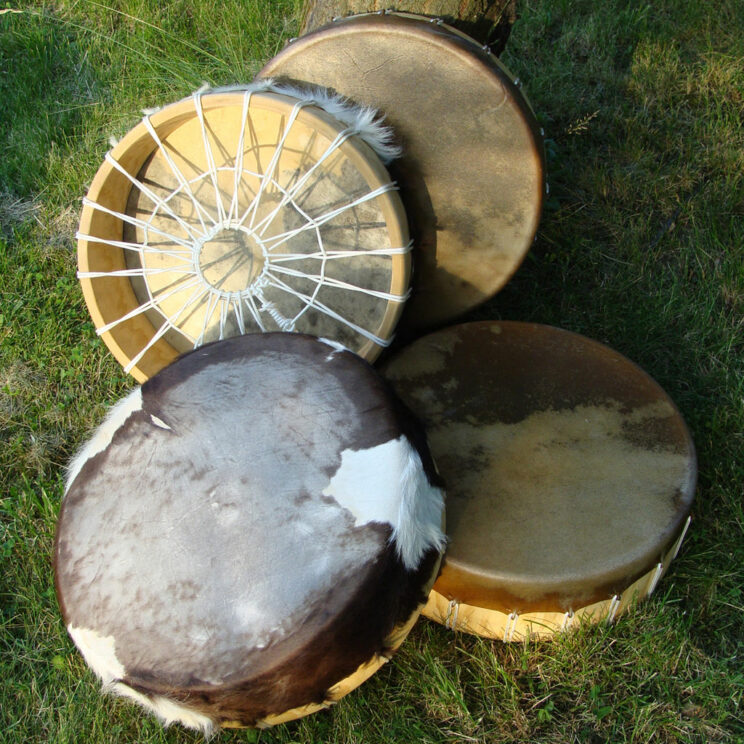
The Frame drum is a type of drum that originated in the Middle East. It is a handheld drum that has a single head stretched over a frame. The Frame Drum is played with hands and produces a range of sounds, depending on how it is hit.
The Frame Drum has a long history, with a strong place within Native American Drumming, they are an old instrument, to say the least. There are many types of Frame Drums, of different sizes and shapes. They are popular all over the world and are often played in drum circles.
Types of Drum Circles
Drum circles have been around since drums were invented. People usually think of African or Native American tribes when they think of drum circles, but they existed all over the world.
In earlier ages, they were often used in spiritual ceremonies, but today there are three main types of drum circles around.
Community Drum Circles
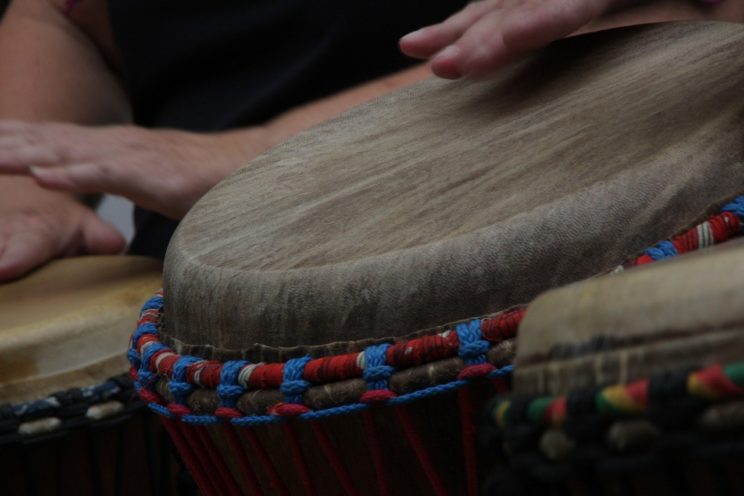
First off, there is a community drum circle. This is the core, original, drum circle where people gather informally, and everybody is playing drums freely.
This type of circle drum is essentially chaotic, but from that chaos, something beautiful will emerge and when you’re there to see it, it gives you positive vibes and feeds your mind and soul.
The main feature that distinguishes this type of drum circle from any other is that there is no leader in the group. Democracy and equality are the two main features that characterize this group.
Facilitated Drum Circles
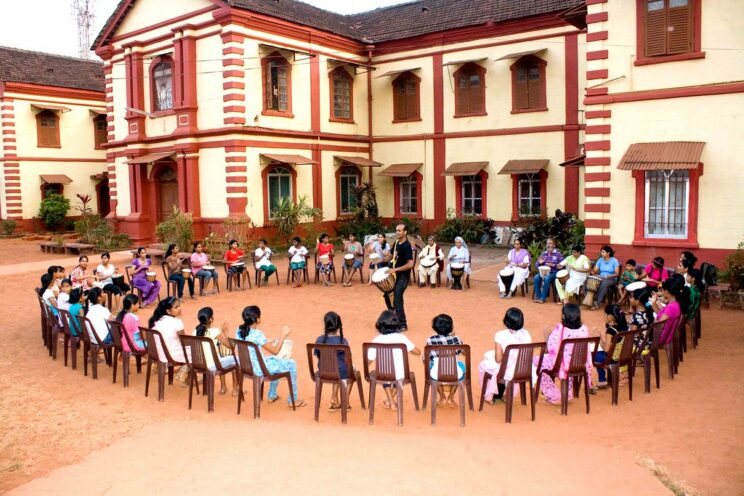
From community drum circles evolved facilitated drum circles. Facilitated drum circles are, as the name suggests, drum circles where the people in a circle have someone to lead them (usually named facilitator or conductor).
This person is usually someone experienced, with more knowledge of playing the drums and going to the drum circle. They are there to show the others what to play and how to play it, essentially leading the group to harmony.
Professional Drum Circles
Apart from these two, there are also professional drum circles, which are a type of facilitated drum circle. Here the conductors are professionals who usually provide all of the drums and equipment one group might need and lead them through the ritual. These are often used by large companies for team building and stuff like that.
What Is The Purpose of a Drum Circle?
People join drum circles for lots of different reasons. Some are looking to socialize, others are there for the love of drumming, some of them want to just let off some steam.
They all have in common that they feel liberated when playing in a drum circle. Most people just like the feeling of belonging to a group where they can freely participate in a social activity, meet new friends, and have some fun while doing it.
Of course, some types of drum circles are conducted and used for targeted therapeutic reasons, but even with the informal circles, you will still get that vibrant, energetic feeling to charge your batteries.
What Kind of Drums are Used in Drum Circles?
Usually, people in drum circles are using different types of native and tribal drums (or which originated from there) such as bongos, djembe, maracas, and so on. But you can use any types of drums or percussion instruments that you see fit in a drum circle (if it’s an informal one).
Of course, you shouldn’t expect to have to bring the whole drum set as it would defy its purpose, but any type of percussion instrument will do the job, as it’s not about the drums per se, but that feeling of group belonging.
What Should I Bring to a Drum Circle?
First off, you should check beforehand what type of drum circle you are planning to attend. If you’re joining a facilitated drum circle, you can ask the facilitator if there is anything that you should bring with you.
In general, for a drum circle, you can bring any drums you have. Usually, drum circles have some drums laying around for people that would like to join but don’t own a drum or a percussion instrument yet.
You can bring any type of shaker, woodblock, or other instruments that would add some interesting sounds to the mix.
What Should I Expect at a Drum Circle?
Depending on what type of drum circle you will be joining, you can expect different things. First of all, if you are in any type of facilitated drum circle, you should expect to have somebody to guide the experience.
If you’re in a community drum circle, then the experience will differ wildly depending on the group. You should expect to be more confused at first but to have more freedom once you get a grasp on things. You should also expect a lot of noise 🙂
8 Tips for Holding a Drum Circle
- Get enough drums for all of the participants and then some more if anyone wants to join as an extra.
- Find a large enough space, best in the outdoors, that can accommodate all of the people comfortably, and where others walking by can also hear you and join you if they wish.
- Start slow and build the rhythm up slowly and progressively.
- Let the group take over and find the rhythm and pace at which they want to go
- Explain to the beginners what to do and how to do it and always be welcome for new participants.
- Anyone can join – age is not a restriction!
- Don’t forget to relax and have fun while creating something beautiful and new.
- Make sure the space you are using is suitable for many percussion instruments to be played. Of course, the drums are loud!
Summary
Drum circles are a great way to socialize, meet new friends, and have some fun. They are also a great way to relieve stress and tension. Drum circles are open to anyone and everyone, regardless of age or experience level.
Drum circles use various types of drums and percussion instruments to create a unique and vibrant sound. When planning a drum circle, be sure to find a large enough space to accommodate all of the participants, have enough drums for everyone and start slow to allow the group to find its rhythm. Most importantly, don’t forget to relax and have fun!
Featured image by “Drums Circle by Arthur Fernandes” by Joel’s Goa Pics is licensed under CC BY-SA 2.0
Frame Drums Image by: Ratomir Wilkowski, www.RKP.org.pl, CC BY 3.0, via Wikimedia Commons

